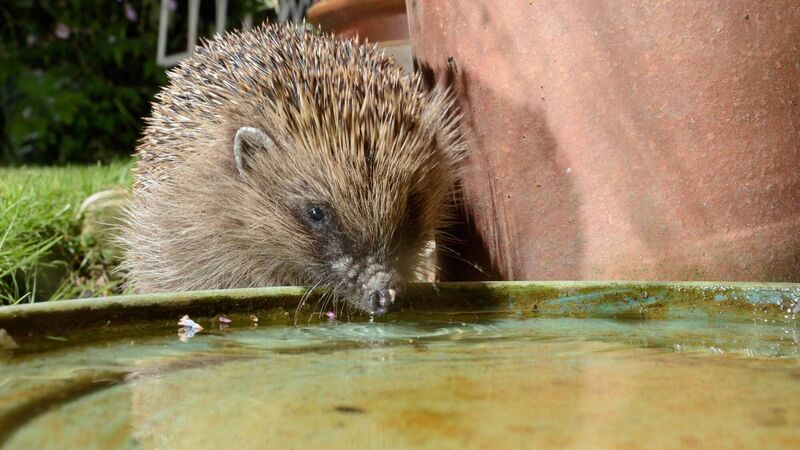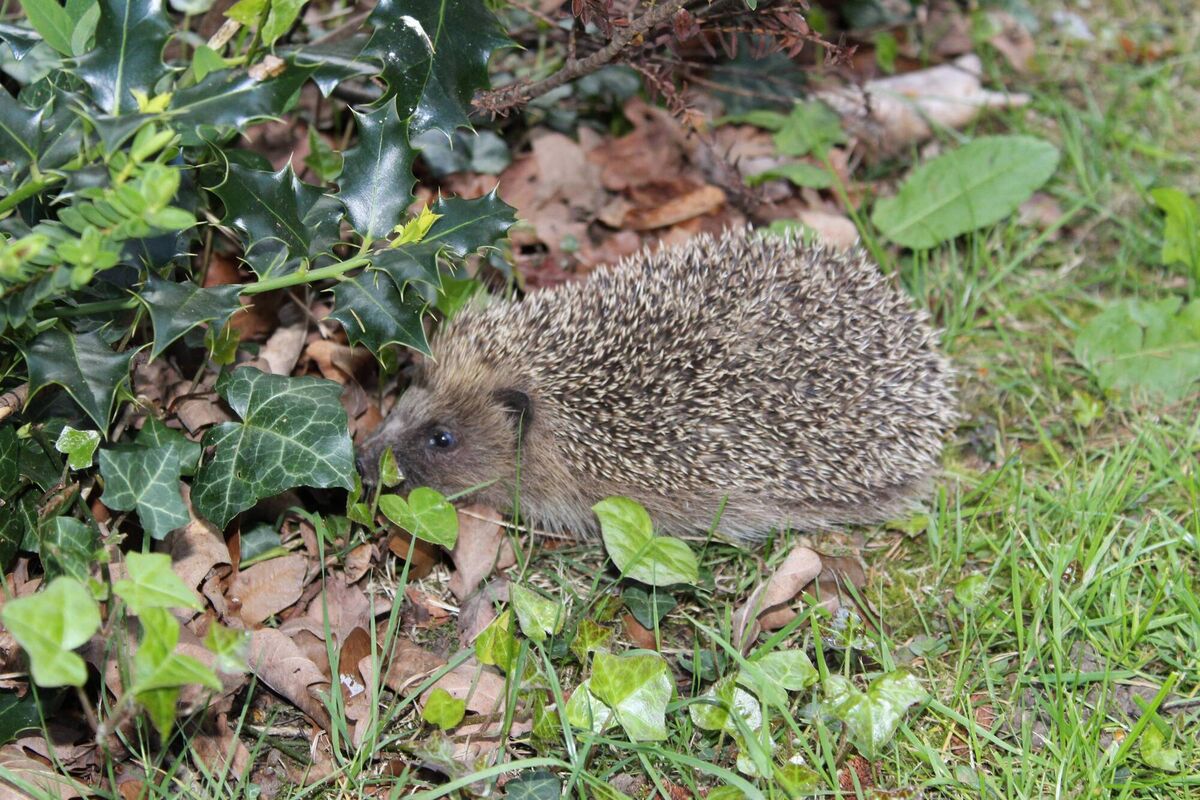Hedgehogs getting ready for hibernation

As hedgehogs are generally nocturnal they are not often seen in the wild unless they are found dead on roads, or if they are regular visitors to gardens at night. The Irish Hedgehog Survey is looking to receive any sightings of live or dead hedgehogs to build up a more detailed picture of where they occur. Picture: Alamy/PA
Some readers have been telling us about seeing hedgehogs in their gardens these evenings: not a surprise as the spiky chaps actively prepare for winter hibernation.
If your garden has hedges, trees and plants which offer cover for these harmless creatures, then they will be attracted to your place. They also rest beneath heaps of leaves, compost, logs and twigs, and you could even find them under a garden shed.
Given the large-scale destruction of hedgehog habitat in recent decades — loss of hedgerows, intensive farming, as well as road deaths and poisoning from slug pellets — they are looking for alternative, safer havens. So, what better than domestic gardens and, hopefully, friendly people in the on-site houses!
The British hedgehog population has fallen massively in the last quarter century, in the region of 50% to 75%, and it is officially listed there as ‘vulnerable to extinction’. The same level of study has not been carried out here, but many experts agree the rate of decline is similar.
It would be interesting to get some idea of the extent of road mortality alone, given the number of dead hedgehogs we see on roads. By the way, the robotic lawnmower is reported to be another hazard.
Like foxes, it appears they are increasingly turning to urban and suburban settings, with private gardens and public parks providing suitable cover and habitat.

They can travel for a kilometre or more per night looking for food and mates and could have several nests where they can rest during the day.
Hedgehogs can be the gardener’s friend. They are a natural form of pest control as they eat large amounts of slugs and insects, thus obviating the use of harmful chemicals.
An online hedgehog survey is being carried out by the National Biodiversity Data Centre (NBDC) and researchers at University College Galway.
The NBDC gives some useful tips such as, for instance, to leave little holes in fences, or garden walls, so that hedgehogs can have ‘hog highways’ to move around.
People can also feed them with wet cat, or dog, food. Bread and milk are not suitable, but shallow dishes of water left outside are ideal, according to the NBDC.
Though gentle and shy, the prickly hedgehog can look quite fearsome.
Its Irish name is ‘gráinneog’ (the little ugly one) and, in medieval times, hedgehogs were believed to be witches in disguise.
Much kinder to them, however, is Celtic mythology which attributes wisdom and foresight to the animal and a belief that it could predict the weather, perhaps because of its rush to hibernation as it senses the advance of winter.








